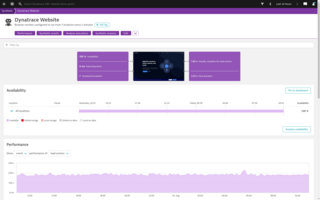- In Dynatrace, go to Synthetic > Create a synthetic monitor > Create an HTTP monitor
- Enter a name for the monitor (up to 500 characters)
- Select Add tag to apply manually created tags
- Be sure to add an Owner tag (Key = Owner, Value = your email)
- Tags can be managed after the monitor is created on the HTTP monitor details page
- IMPORTANT: If the synthetic is under development, add tag “UnderDevelopment” to avoid problems
- Choose a mode
- Visual mode (default) allows you to view and set up HTTP requests through UI controls
- Script mode allows you to view and edit request settings as a JSON script
- You can switch between the two as you set up your monitor
- Add HTTP request
- Choose request type - Specify the request type and enter basic request settings
- For an HTTP request: enter request URL, request Name (if default is insufficient), and select HTTP method. Then Add HTTP request to create the request
- For OAuth2 authorization request: enter the Access token URL and give the request a Name (if default is insufficient). Then Add OAuth2 authorization request to create the request
- Once the request is created, configure basic request settings in the expanded request settings. This is where there is an optional User agent and the ability to specify success/failure based on Response status code verification.
- Expanded request settings is where you can add token credentials to the HTTP request URL
- Configure Additional options for the request (vary based on request type)
- Add multiple HTTP requests if needed: select Add HTTP request again and repeat the steps above
- Select Next in the lower-left corner to specify monitor frequency and locations
- Choose monitor frequency. Scroll down to select locations (private and public locations are displayed by continent). Selections will be displayed on map.
- Select Next for a final review of monitor settings
- On the Summary page, review the properties of the HTTP monitor
- Then select Create HTTP monitor to save changes and activate the monitor
The HTTP monitor details page will be displayed and will begin showing results data as it’s acquired. From the quick links in the upper-left corner, select the expand button to access monitor settings.
